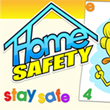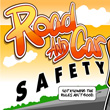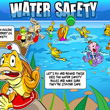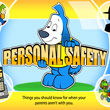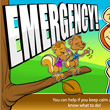- Home
- Comics
-
Colouring Pages
Safety Colouring Pages
-
Resources
Safety Videos
Safety News
- Connect
COVID-19 INFORMATION
Ever since the WHO (World Health Organization) has declared COVID-19 as a pandemic, world governments have begun drastic measures to try to slow the curve of the outbreak as not to overwhelm their healthcare facilities.
Even though the extent of the crisis it is not immediately apparent to those of us in North America, one only needs to follow the news for countries across the ocean to see how quickly things can change. The primary point of shutting down schools, daycares, places of worship and any place where large numbers of people congregate is to limit transmittable contact in order to slow down the outbreak.
"Flattening the Curve" is the term being used, and what it means is that in order to have a chance to be able to have enough healthcare resources to treat people who become very ill with this virus, we must limit the number of cases that occur within a short amount of time. The acceleration factor without this proactive measure will quickly decimate the portion of the population that already has a vulnerable immune system due to being elderly, or having other illnesses or diseases that they are already battling, or for the very young which haven’t yet fully developed their immune system. We know that the progress of this virus is fast and prolific. If we do nothing to stem the rising number of cases, many people will die needlessly just because we will not have enough health resources or personnel available to treat all that need it, when they need it.
It is everyone's responsibility to do what they can to mitigate physical contact with others that may be carrying the virus in spite of having no immediate symptoms. Everyone should also act with the assumption that they are a carrier of the virus, regardless of whether or not they are displaying symptoms.
To slow the transmission of COVID-19, if you are outside your home, we are all being asked to practice physical distancing as well as other common-sense precautionary measures.
- Maintain a physical distance of 2 meters (6 feet) between you and others.
- Do not shake hands or hug and kiss others.
- WASH YOUR HANDS immediately after entering indoors from outdoors. Wash your hands thoroughly and frequently, especially after touching surfaces that other people may have touched such as handrails, light switches, door handles, countertops, shopping cart handles, money, etc.
- DO NOT TOUCH YOUR FACE! Pathogens picked up by your hands enter your body through the mucous membranes in your nose, mouth and eyes.
- Cough or sneeze into your elbow, not your hands.
- Disinfect surfaces in your own home, especially in the kitchen and bathroom, as well as door handles and light switches. (Bleach is considered to be the most effective disinfectant - In a spray bottle mix 10 ml of household bleach that is less than 3 months old with 500 ml of cold water.
- If you believe you have been exposed to the virus, but have not yet begun to exhibit symptoms, quarantine yourself at home for a minimum of 14 days to monitor for symptoms.
- If you believe you are infected or contagious, isolate yourself from others who are not infected and CALL your local health provider for further instructions. (Do not go to your local hospital or health facility unless instructed to do so.)
Symptoms of Covid-19 are:
- fever
- flu-like symptoms like coughing, sore throat and fatigue
- shortness of breath
Download this page as PDF

